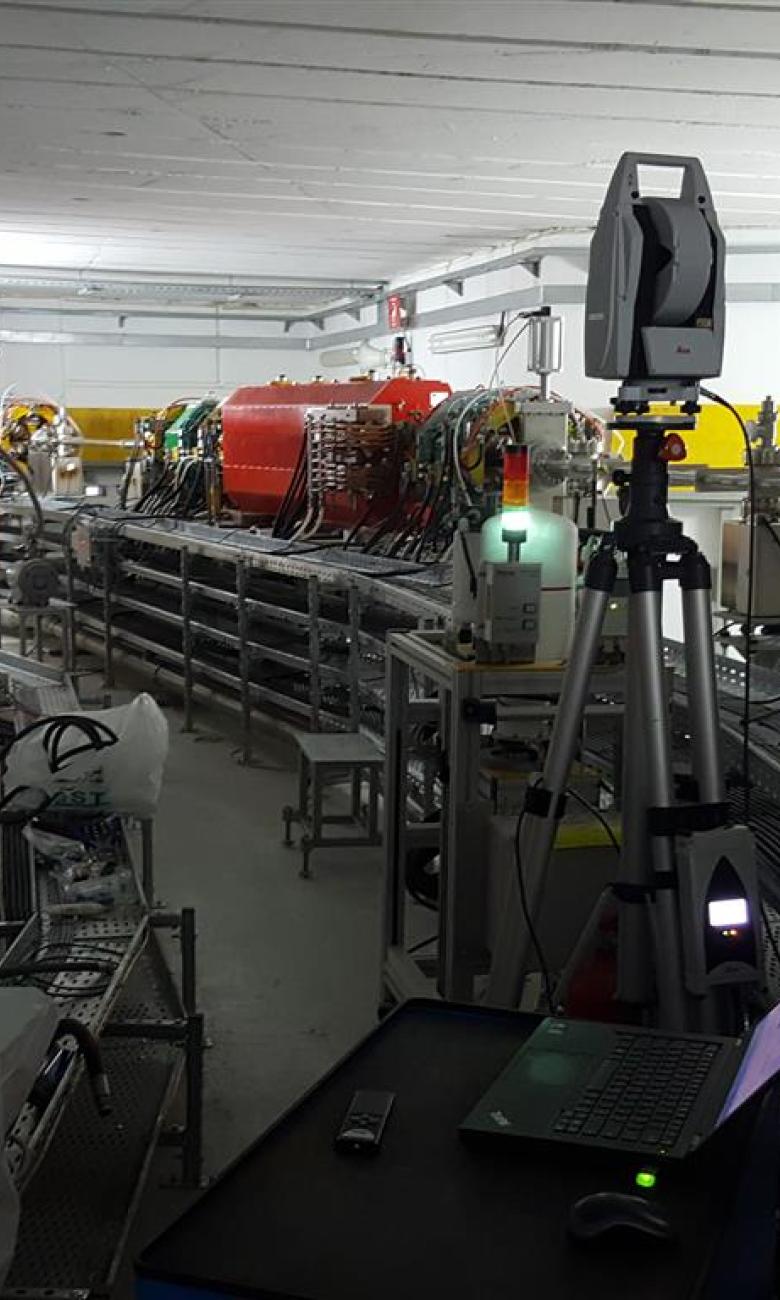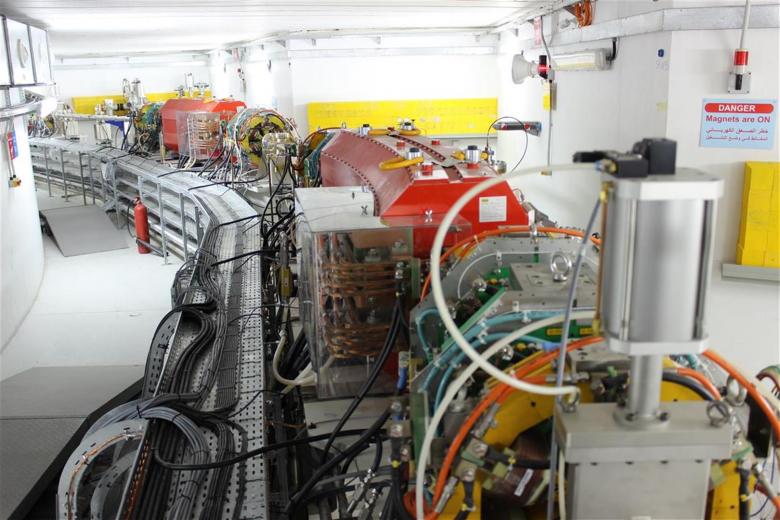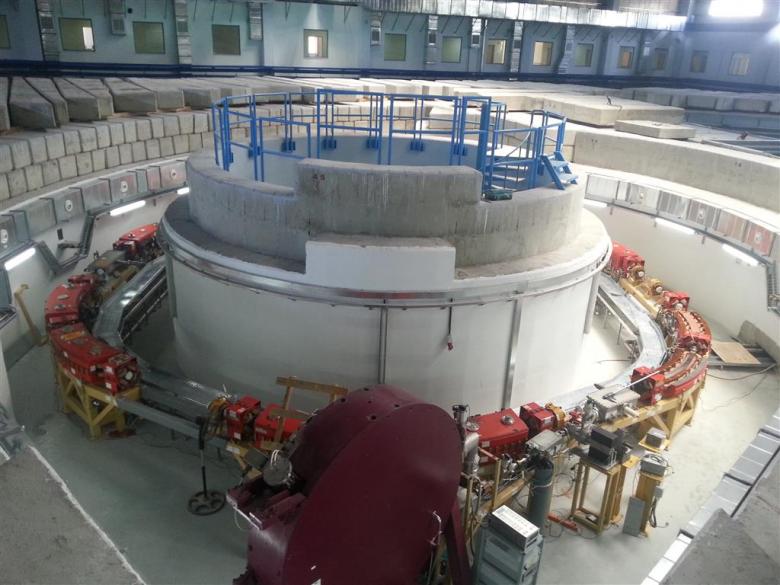SESAME: CERN helps plant a seed of peace in the Middle East
In One Thousand and One Nights, ‘open sesame’ are the magic words that allow Ali Baba to access a hidden treasure of untold riches. In the 1990s this classic tale inspired physicists at the European Organization for Nuclear Research (CERN) in Geneva to ask whether the CERN model of science and peace could be replicated in the Middle East. It took years of hard work and complex negotiations to bring the dream to life. The new centre is called SESAME.
SESAME stands for ‘Synchrotron-Light for the Experimental Science and Applications in the Middle East’. It took years of hard work and complex diplomatic negotiations in a region torn by decades of political turmoil to make the dream of launching a cooperative venture by scientists and governments modelled on CERN a reality. Under the auspices of UNESCO, SESAME was officially opened in Allan, Jordan, on 16 May 2017, with eight member states, including Iran and Israel. Switzerland joined this intergovernmental scientific organisation in 2010 as an observer. The Paul Scherrer Institute, which operates the Swiss Light Source, a third-generation synchrotron light source facility in the Swiss canton of Aargau, provided technical assistance and equipment and spent years training scientists who now work at SESAME. Thanks to SESAME, members of the region’s scientific community are able to carry out world-class scientific research in subjects ranging from biology to archaeology and also engage in scientific cooperation that fosters a culture of peace in the region.

Building a culture of peace
We met with Herwig Schopper, professor emeritus at the University of Hamburg, former director general of CERN and former president of SESAME, in the CERN cafeteria to talk about the story of SESAME. Aged 94, Herwig Schopper has just received, together with fellow scientists who helped establish SESAME, the prestigious 2019 Award for Science Diplomacy by the American Association for the Advancement of Science. Schopper’s decision to join the SESAME project in 2000 – the year he was appointed chair of SESAME’s interim council – came naturally, as he had dedicated his life to particle physics, to CERN and to the values that CERN has always embodied. With well-earned pride, he told us: “CERN is an intergovernmental organisation that promotes scientific excellence and collaboration. It rose from the ashes of the Second World War as one of the first initiatives aimed at consolidating peace, bringing Europe together and making it strong again. CERN and Geneva became a cultural melting pot where it didn’t matter where scientists came from; what mattered then and matters now is their contribution to science. Miracles such as the invention of the World Wide Web are happy accidents that have resulted from over 60 years of research at CERN”. Propagating a culture of scientific exchange and promoting peaceful scientific collaboration became Schopper’s vocation and was also the reason why he embarked on the SESAME project almost two decades ago.
When love meets science anything can happen
The road Schopper travelled was paved with excitement and challenges. He brought considerable scientific and entrepreneurial skills to the project, but he quickly realised that to have a chance of succeeding in getting SESAME’s scientific objectives to prevail over the individual member states’ political considerations he would also have to reinvent himself as a diplomat. Bringing Israel, the Islamic Republic of Iran, the Palestinian Authority and the other five member states to the table and persuading them to put aside historical and political differences to jointly establish an intergovernmental scientific organisation was an enormously difficult challenge. Selecting the host country and site for the facility was the most complex process of all. Schopper inspected 12 potential sites before the site that was ultimately chosen in Allan, Jordan, was accepted by all member states. The site was selected because Jordan was a relatively small country situated in the centre of the region, it had a well-developed infrastructure, it was outward-looking and it undertook to provide scientists from all over the world with access to the facility – the parallels to Switzerland’s hosting of CERN in Europe are evident.

When Schopper visited Jordan in the late 1990s while searching for right site for SESAME, he faced a series of bureaucratic hurdles that made him consider abandoning his mission. But good fortune intervened. The day before having to leave Jordan, a former of student of his invited him to a dinner. Jordan’s Prince Ghazi bin Muhammad was by Shopper’s surprise also of the party. The two men struck up a conversation, one topic led to another and as it often happens when two academics talk to each other they soon started to talk about their respective doctoral thesis. As it happened Prince Ghazi Bin Muhammad had based part of his University of Cambridge doctoral thesis, entitled "What is Falling in Love?", on the academic writings on the nature of love of the Swiss cultural theorist and European federalist Denys de Rougemont. Schopper knew de Rougemont for having played a pivotal role in the creation of CERN. At the European Cultural Conference in Lausanne in 1949, de Rougemont had first proposed the idea of establishing what came to be known as CERN, the institution on which SESAME would be modelled. Through de Rougemont, Schopper found the missing link between science and love. He was able to build the personal connection to the Jordanian prince needed to persuade him about his project. The prince arranged for Schopper to meet the King of Jordan the following day and Jordan finally agreed to host SESAME.

Schopper looks back with nostalgia. “CERN’s experiments are increasing the probability of improbable collisions between sub-atomic particles, but in a certain sense also on a human level by bringing together scientists of different cultural backgrounds. SESAME is a result of those collisions”.
On to the next challenge
SESAME is now operational, employs over 60 staff and is developing a scientific community that is carrying out a wide range of experiments. While Schopper is confident about the progress of scientific collaboration among SESAME scientists, he is concerned about the political instability in the region. The crisis in Syria, for example, has had a serious negative impact on the facility’s electricity costs. This is also one of the reasons he praises countries such as Switzerland with a strong tradition of promoting peace. Enjoying his retirement from CERN and its laboratories, Schopper can be proud to have accomplished his mission. But he is not resting on his laurels, and is already working on another CERN baby: a synchrotron in the Balkan region. That, however, is another story ...




